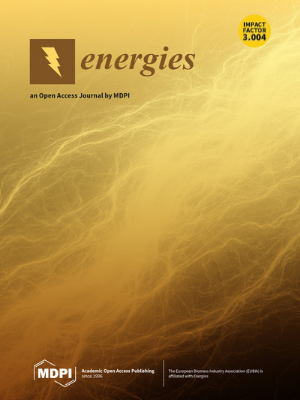Numerical and Experimental Study on Combustion Characteristics of Micro-Gas Turbine Biogas Combustor
IF 3
4区 工程技术
Q3 ENERGY & FUELS
引用次数: 1
Abstract
The use of biogas in land-based gas turbines for power generation is a promising approach to reducing greenhouse gases and our dependence on fossil fuels. The focus of this research was to investigate the fuel/air mixing and combustion performance in an DLE (dry low emission) type can combustor designed for a micro-gas turbine. The fuel and air mixing uniformity was studied considering the air flow characteristic and fuel injection performance through the numerical simulation. The influence of the fuel/air mixing characteristics on the combustion characteristics was studied by numerical simulation and experimental tests. The combustion characteristics studied included the temperature field in the combustor, the pattern factor at the combustor outlet, combustion efficiency, and pollutant emission characteristics. The results show the position of the fuel nozzle has little effect on the mixing uniformity due to the limited mixing space for the micro-gas turbine combustor, while there are optimal fuel nozzle diameters to generate the suitable fuel jet momentum for the mixing process. The fuel/air mixing characteristics had an obvious influence on the combustion performance for the studied DLE combustor. The increase in the fuel air mixing uniformity can decrease the NOx emissions and generate a better temperature distribution at the combustor outlet. The increased mixing uniformity may decrease the combustion efficiency and increase the CO emissions of the micro-gas turbine combustor.微型燃气轮机沼气燃烧器燃烧特性的数值与实验研究
在陆基燃气轮机中使用沼气发电是减少温室气体排放和减少我们对化石燃料依赖的一种很有前途的方法。本研究的重点是研究为微型燃气轮机设计的DLE(干式低排放)型燃烧室的燃料/空气混合和燃烧性能。通过数值模拟研究了考虑气流特性和燃油喷射性能的燃油与空气混合均匀性。通过数值模拟和试验研究了燃料/空气混合特性对燃烧特性的影响。所研究的燃烧特性包括燃烧室温度场、燃烧室出口模式因子、燃烧效率和污染物排放特性。结果表明,由于微型燃气轮机燃烧室的混合空间有限,燃油喷嘴的位置对混合均匀性影响不大,但存在最优燃油喷嘴直径以产生合适的燃油射流动量进行混合。燃料/空气混合特性对DLE燃烧室的燃烧性能有明显的影响。燃料空气混合均匀度的提高可以降低NOx的排放,并在燃烧室出口产生更好的温度分布。混合均匀性的提高会降低燃烧效率,增加微型燃气轮机燃烧室的CO排放量。
本文章由计算机程序翻译,如有差异,请以英文原文为准。
求助全文
约1分钟内获得全文
求助全文
来源期刊

Energies
ENERGY & FUELS-
CiteScore
6.20
自引率
21.90%
发文量
8045
审稿时长
1.9 months
期刊介绍:
Energies (ISSN 1996-1073) is an open access journal of related scientific research, technology development and policy and management studies. It publishes reviews, regular research papers, and communications. Our aim is to encourage scientists to publish their experimental and theoretical results in as much detail as possible. There is no restriction on the length of the papers. The full experimental details must be provided so that the results can be reproduced.
 求助内容:
求助内容: 应助结果提醒方式:
应助结果提醒方式:


